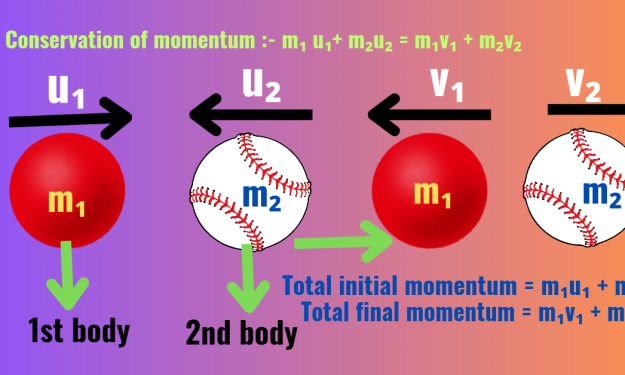The Definition and Purpose of Yoga Mats
Enhancing the Yoga Experience

Introduction:
Yoga, an ancient practice originating in India, has gained immense popularity worldwide due to its numerous physical, mental, and spiritual benefits. Central to the practice of yoga is the yoga mat, a specialized mat designed to support and enhance the practitioner's experience. In this article, we delve into the definition and purpose of yoga mats, exploring their significance in practicing yoga.
I. Definition of Yoga Mats:
Yoga mats are specifically designed mats used by practitioners during yoga sessions. These mats provide a stable, comfortable, and non-slip surface for various yoga postures (asanas), meditation, and breathing exercises. Typically, yoga mats are rectangular in shape, made of different materials, and offer varying degrees of thickness and cushioning.
II. Purpose of Yoga Mats:
Stability and Grip:
One of the primary purposes of yoga mats is to provide stability and a reliable grip for practitioners. The textured surface of the mat prevents slipping, ensuring that the practitioner can maintain proper alignment and balance during poses. This stability allows for a more confident and focused practice, reducing the risk of injury.
Comfort and Support:
Yoga mats offer a layer of cushioning, providing comfort and support for the body during various poses. The thickness of the mat helps cushion sensitive joints, such as the knees, wrists, and elbows, preventing discomfort or pain. The added comfort allows practitioners to hold poses for longer durations, promoting flexibility, strength, and endurance.
Hygiene and Cleanliness:
Yoga mats act as a personal barrier between the practitioner and the floor, protecting against dust, dirt, and sweat. Regular practice can generate perspiration, and yoga mats are designed to absorb moisture, preventing slipping caused by a wet or slippery surface. Additionally, yoga mats are easy to clean, ensuring a clean and hygienic practice environment.
Defined Practice Space:
Yoga mats create a designated space for practice, demarcating a personal sanctuary within a larger environment. This defined space helps establish a dedicated mindset, promoting focus, concentration, and a sense of mindfulness. Furthermore, the mat acts as a psychological boundary, signaling a separation between the practice area and the outside world.
Energy and Insulation:
Yoga mats provide insulation between the practitioner and the ground, acting as a barrier against the transfer of energy. In some yoga traditions, it is believed that the mat helps contain and preserve the vital energy (prana) generated during practice, preventing it from dissipating into the earth. This energy containment is said to enhance the overall yoga experience and promote a deeper connection with the self.
Personalization and Expression:
Yoga mats offer an opportunity for personalization and self-expression. With a wide range of colors, patterns, and designs available, practitioners can choose a mat that resonates with their individuality and style. This personal touch can contribute to a sense of ownership and motivation, encouraging regular practice and a deeper connection with yoga.
Choosing the right yoga mat can greatly enhance your yoga practice. Here are some factors to consider and advice to help you select the best yoga mat for your needs:
Thickness and Cushioning:
Consider the level of cushioning you require. Thicker mats (around 6mm) provide more cushioning and are ideal for those with sensitive joints or practicing styles like Hatha or Yin yoga that involve longer holds.
Thinner mats (around 3-4mm) offer a closer connection to the ground and are preferred for styles like Ashtanga or Vinyasa yoga that involve more dynamic movements and transitions.
Material and Texture:
PVC mats are common and provide good grip, durability, and affordability. However, they are not environmentally friendly.
Natural rubber mats are eco-friendly, offer excellent grip, and provide good cushioning. They are suitable for those with latex allergies.
Other options include TPE (thermoplastic elastomer) and cork mats, which are more sustainable choices and offer different textures and benefits.
Grip and Traction:
Look for a mat with a non-slip surface to ensure stability and prevent injuries. Mats with a textured or sticky surface can provide better grip, especially when you sweat.
Consider the mat's ability to maintain traction on various surfaces, including hardwood floors, carpet, or studio floors.
Size and Weight:
Choose a mat length that accommodates your height, allowing you to fully stretch out without your body extending beyond the mat.
Consider the portability of the mat if you intend to carry it to classes or travel with it. Lighter mats are easier to transport, while thicker mats may be bulkier.
Durability and Longevity:
Assess the durability of the mat to ensure it withstands regular use and maintains its quality over time.
Check for mats that are easy to clean and resistant to wear and tear. High-quality mats tend to last longer and provide better value for money.
Eco-Friendliness:
If environmental sustainability is important to you, choose mats made from natural and recyclable materials. Look for certifications such as Oeko-Tex or eco-friendly manufacturing practices.
Price:
Set a budget based on your needs and frequency of use. While there are affordable options available, investing in a higher-quality mat can offer better durability and performance in the long run.
Test and Research:
Whenever possible, try out different mats in-person to assess their comfort, grip, and feel. Many yoga studios provide mats for trial use.
Read reviews and seek recommendations from other practitioners or trusted sources to gather insights on different mat brands and models.
Conclusion:
Yoga mats play a vital role in the practice of yoga, offering stability, comfort, and hygiene to practitioners. They create a dedicated space for practice, enhance grip and support, and provide a personal and customizable element to the yoga experience. Whether you are a beginner or an experienced yogi, investing in a high-quality yoga mat can significantly enhance your practice, allowing you to fully immerse yourself in the transformative journey that is yoga.
About the Creator
Enjoyed the story? Support the Creator.
Subscribe for free to receive all their stories in your feed. You could also pledge your support or give them a one-off tip, letting them know you appreciate their work.





Comments
There are no comments for this story
Be the first to respond and start the conversation.